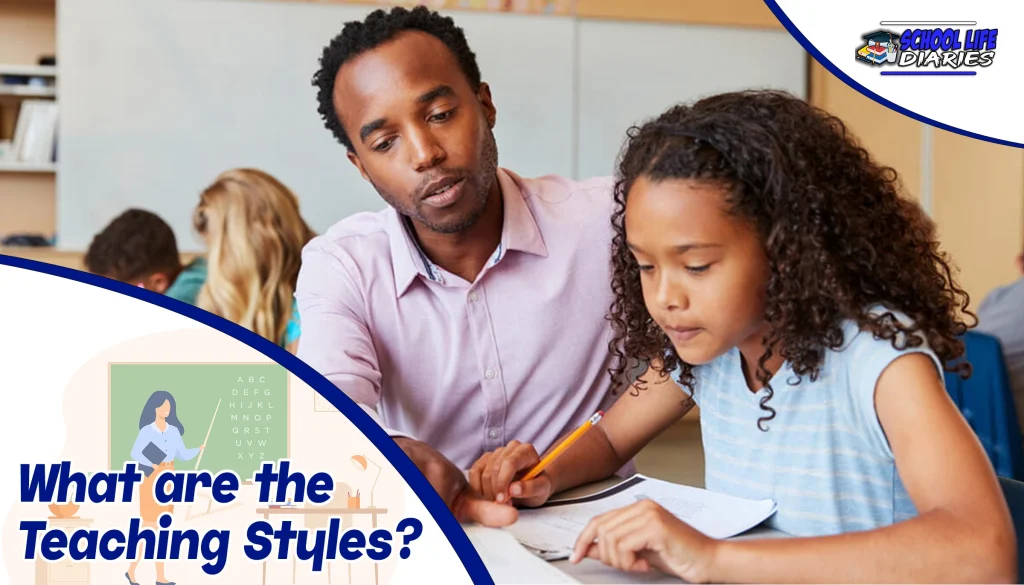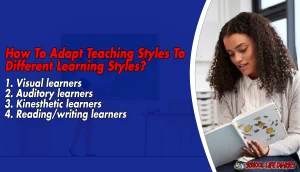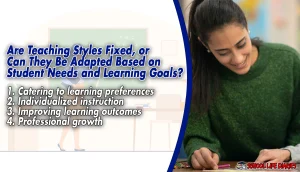Teaching styles refer to the different approaches and methods that educators use to deliver instruction and engage students in the learning process. Each teaching style has its own unique characteristics and advantages, which can be adapted based on student needs and learning goals. In this article, we will explore various teaching styles, how they can be adapted to different learning styles, the influence of classroom diversity on teaching styles, and whether one style is better than others. We will also discuss how teachers can incorporate multiple teaching styles within a single lesson or unit.
Teaching styles refer to the different approaches and methods that educators use to deliver instruction and engage students in the learning process. These styles can vary in their emphasis on teacher-led activities, student collaboration, hands-on experiences, or inquiry-based exploration. Understanding different teaching styles can help educators adapt their instructional practices to meet the diverse learning needs of their students.
In this article, we will explore various teaching styles, discuss their advantages and disadvantages, and examine how they can be adapted to different learning styles and classroom diversity.
How To Adapt Teaching Styles To Different Learning Styles?
Adapting teaching styles to different learning styles is crucial for creating an inclusive and effective learning environment. Students have diverse learning preferences and strengths, and by understanding these differences, educators can tailor their teaching methods to accommodate various learning styles. Here are some strategies for adapting teaching styles:
1. Visual learners:
Use visual aids such as diagrams, charts, and videos to enhance understanding and retention of information.
2. Auditory learners:
Incorporate discussions, lectures, and audio recordings to facilitate learning for students who prefer listening.
3. Kinesthetic learners:
Provide hands-on activities, experiments, and interactive exercises that allow students to physically engage with the subject matter.
4. Reading/writing learners:
Assign readings, written assignments, and note-taking activities to cater to students who excel in reading and writing. By incorporating a combination of these strategies, teachers can accommodate the diverse learning needs of their students and promote better comprehension and engagement.
Does Classroom Diversity Influence My Style of Teaching?
Yes, classroom diversity plays a significant role in influencing teaching styles. When students come from different cultural, linguistic, and socioeconomic backgrounds, educators need to consider their unique perspectives and experiences. Here’s how classroom diversity can influence teaching styles:
1. Cultural sensitivity:
Teachers should strive to create an inclusive classroom environment that respects and values the diverse cultural backgrounds of students.
2. Differentiated instruction:
Recognizing students’ varying abilities and needs, teachers can tailor their teaching approaches to provide appropriate support and challenge for all learners.
3. Multicultural perspectives:
Incorporating diverse perspectives and examples in the curriculum helps students develop a broader understanding of the subject matter and fosters empathy and cultural awareness.
4. Collaborative learning:
Encouraging collaboration among students from different backgrounds promotes mutual understanding, communication skills, and teamwork. Considering classroom diversity allows educators to create a positive and inclusive learning environment that celebrates individual differences while promoting equity and academic success.
Are Teaching Styles Fixed, or Can They Be Adapted Based on Student Needs and Learning Goals?
Teaching styles are not fixed and can be adapted based on student needs and learning goals. Effective educators understand the importance of flexibility and are willing to modify their teaching methods to meet the unique requirements of their students. Here’s why adaptability is essential:
1. Catering to learning preferences:
Adapting teaching styles ensures that students’ diverse learning preferences are acknowledged and addressed, enhancing their engagement and understanding.
2. Individualized instruction:
Different students may have different learning goals and abilities. Adapting teaching styles allows educators to provide personalized instruction and support.
3. Improving learning outcomes:
By tailoring teaching methods to suit specific learning needs, educators can improve learning outcomes and help students achieve their academic goals.
4. Professional growth:
Embracing adaptability encourages teachers to continually refine their instructional practices, seek innovative approaches, and stay up to date with research-based strategies.
5 Different Teaching Styles to Use in 2023
In 2023, educators have access to a wide range of teaching styles to choose from. Let’s explore five popular teaching styles and their advantages and disadvantages:
1. Collaborative Teaching Style:
The collaborative teaching style emphasizes teamwork, group activities, and peer interaction. It promotes student engagement, critical thinking, and communication skills.
Pros of the collaborative teaching style include:
- Encourages active participation and peer learning
- Fosters the development of social skills and teamwork abilities
- Provides opportunities for diverse perspectives and creativity
However, there are also potential cons to consider:
- This may lead to unequal participation if not managed effectively
- Group dynamics can sometimes result in conflicts or distractions
- Requires careful planning and facilitation to ensure learning objectives are met
2. Experiential Teaching Style:
The experiential teaching style focuses on hands-on learning experiences that allow students to actively engage with the subject matter.
Pros of the experiential teaching style include:
- Enhances students’ understanding through direct experience and practical application
- Promotes critical thinking, problem-solving, and decision-making skills
- Increases student motivation and interest in the subject matter
However, there are also potential cons to consider:
- Requires adequate resources, time, and planning for hands-on activities
- Can be challenging to implement in certain subjects or with large class sizes
- Assessment of experiential learning may be more complex than traditional methods
3. Inquiry-Based Teaching Style:
The inquiry-based teaching style encourages students to ask questions, explore topics independently, and discover knowledge through investigation.
Pros of the inquiry-based teaching style include:
- Develops students’ curiosity, critical thinking, and research skills
- Promotes a deeper understanding of concepts and fosters a love for learning
- Encourages student autonomy and ownership of the learning process
However, there are also potential cons to consider:
- Requires scaffolding and support to ensure students stay on track and meet learning objectives
- Can be time-consuming due to individual or small-group research and exploration
- This may pose challenges for teachers in terms of managing classroom discussions and guiding inquiry effectively
Can Teachers Incorporate Multiple Teaching Styles Within a Single Lesson or Unit?
Yes, teachers can incorporate multiple teaching styles within a single lesson or unit to cater to different learning needs and enhance student engagement. By using a combination of teaching styles, educators can create a dynamic and interactive learning environment that appeals to a diverse range of students.
For example, a lesson on photosynthesis could include a collaborative group activity, an experiential lab experiment, an inquiry-based research project, and a brief lecture to provide foundational knowledge. Integrating various teaching styles within a single lesson allows for a more comprehensive and engaging learning experience.
1. Lecturer Teaching Style:
The lecturer’s teaching style involves the instructor delivering information through lectures and presentations.
Pros of the lecturer’s teaching style include:
- The efficient way to deliver large amounts of information within a limited timeframe
- Allows for clear and structured content delivery
- Provides opportunities for the instructor to share expertise and insights
However, there are also potential cons to consider:
- The passive learning experience for students, which may lead to reduced engagement
- Limited opportunities for student interaction and participation
- May not cater to diverse learning preferences and needs
2. Delegator Teaching Style:
The delegator teaching style empowers students to take responsibility for their learning by assigning tasks and facilitating their completion.
Pros of the delegator teaching style include:
- Develops students’ independence, time management, and problem-solving skills
- Encourages self-directed learning and fosters a sense of ownership
- Allows teachers to act as facilitators and guides rather than sole providers of knowledge
However, there are also potential cons to consider:
- Requires careful planning and clear instructions to ensure students understand expectations
- Students may require support and guidance to navigate tasks effectively
- Assessing individual contributions within group tasks can be challenging
3. Facilitator Teaching Style:
The facilitator teaching style focuses on guiding and facilitating student-led discussions and activities.
Pros of the facilitator teaching style include:
- Encourages active learning and critical thinking through student participation
- Promotes collaboration, communication, and problem-solving skills
- Allows students to construct their own knowledge and connect it to real-life situations
However, there are also potential cons to consider:
- Requires skillful facilitation to maintain focus and balance participation
- Students may need guidance and support to ensure learning objectives are met
- Time management can be a challenge when facilitating student-centered activities
Is One Style of Teaching Better Than Others?
No single teaching style is inherently better than others. The effectiveness of a teaching style depends on various factors such as the subject matter, student preferences, and learning objectives. The key is to select a teaching style that aligns with the needs of the students and the learning outcomes desired. Furthermore, employing a diverse range of teaching styles can cater to different learning preferences and promote a well-rounded learning experience.
FAQs:
1. How do I determine which teaching style is best for my students?
Consider the learning preferences of your students, the subject matter, and the desired learning outcomes. Experiment with different teaching styles and gather feedback from students to assess their engagement and understanding.
2. Can I use different teaching styles for different students within the same class?
Yes, differentiating instruction to accommodate individual student needs is a recommended practice. Flexibility in teaching styles allows you to address the diverse learning preferences and abilities of your students effectively.
3. Q: Are teaching styles static, or can they change over time?
Teaching styles are not fixed and can evolve over time. As educators gain more experience and adapt to new research and best practices, they may modify their teaching styles to better meet the needs of their students.
4. How can I assess the effectiveness of different teaching styles?
Assessing the effectiveness of teaching styles can be done through a combination of formative and summative assessments, student feedback, and observations of engagement and understanding during lessons.
5. Should I stick to one teaching style or use a combination?
Employing a combination of teaching styles is often beneficial as it caters to different learning preferences and promotes a more comprehensive learning experience. However, the specific combination depends on factors such as the subject matter, students’ needs, and learning objectives.
6. How do I determine which teaching style is best for my students?
Consider the learning preferences of your students, the subject matter, and the desired learning outcomes. Experiment with different teaching styles and gather feedback from students to assess their engagement and understanding.
Related Article: What Is Teacher Reflection? The Comprehensive Guide
Conclusion:
Teaching styles play a crucial role in creating effective and engaging learning environments. By adapting teaching styles to different learning styles, considering classroom diversity, and being open to flexibility, educators can optimize student learning outcomes.
Experimenting with different teaching styles and incorporating a combination of approaches within lessons allows for a more inclusive and personalized learning experience. Remember, teaching is an art that requires continuous adaptation and growth to meet the ever-evolving needs of students.









